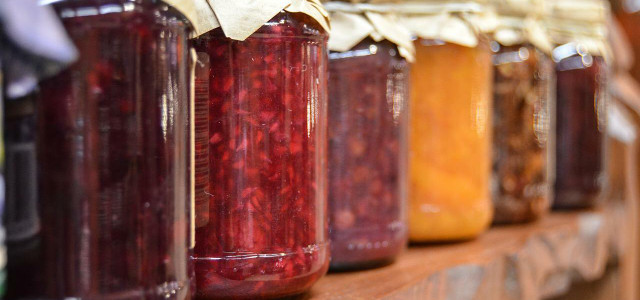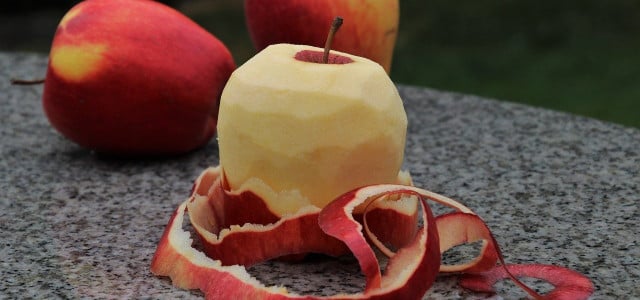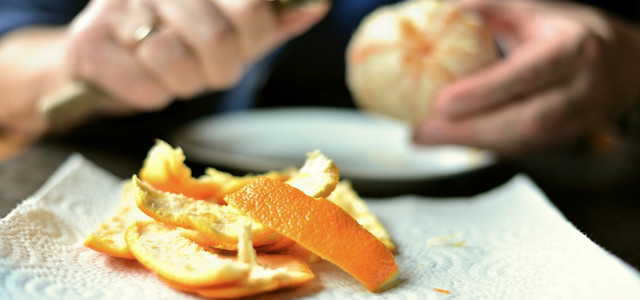You'll find it listed as an ingredient in most jam recipes, but what is fruit pectin? We'll do a deeper dive into this mystery ingredient, and show you how to make it.
Summertime is here, and all that ripening fruit means that now is the perfect time to make some jelly or jam. Most jam recipes however call for an ingredient called “pectin”, but what is fruit pectin? It’s a type of fiber found naturally in the cell walls of plants. It’s what gives fruit rigidity and slowly breaks down during ripening, causing them to become soft.
Firm and unripe fruits, like apples, pears, and citrus fruits, contain higher amounts of pectin than softer fruits such as plums, peaches, and berries. Most commercial pectin is extracted from the byproducts of apple and orange juice production – mostly the cores and peels, where pectin content is the highest. Fruit pectin can be purchased in grocery stores as either a white powder or as a liquid for both regular or low sugar recipes.
How is Pectin Used?
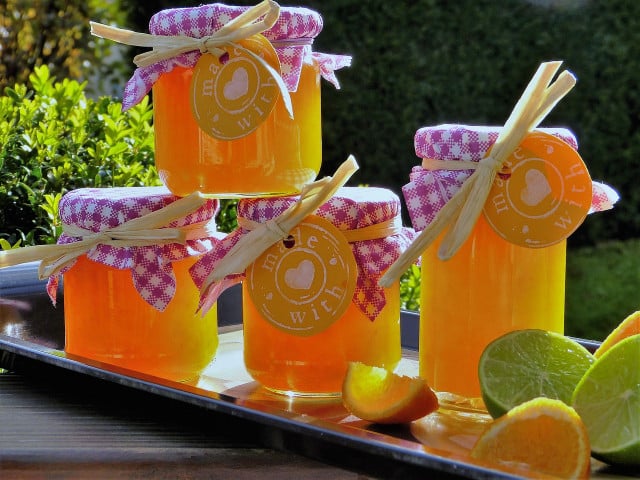


(Foto: CC0 / Pixabay / silviarita)
Fruit pectin is commonly used as a gelling agent for jellies, jams, preserves, marmalades, gummy candies, yogurts, and even desert toppings. Fruit pectin also makes for a healthier alternative to sugar (also a gelling agent) because it contains almost no calories or nutrition. Instead, pectin is a soluble fiber, which aids in digestion and provides a feeling of fullness after eating. Since it naturally occurs in fruit, pectin makes a great vegan gelatin substitute.
In case you are interested in efficient low-tech juicing, pectic enzymes can break down fruit pectin to release more juice than manual juicing alone. This is often done to extract and clarify juice from pulp when making extracts, concentrates, or wine. Pectic enzymes are derived from fungi, making them vegan, and are available at wine making shops or from North Mountain Supply on Amazon**.
How to Make Fruit Pectin
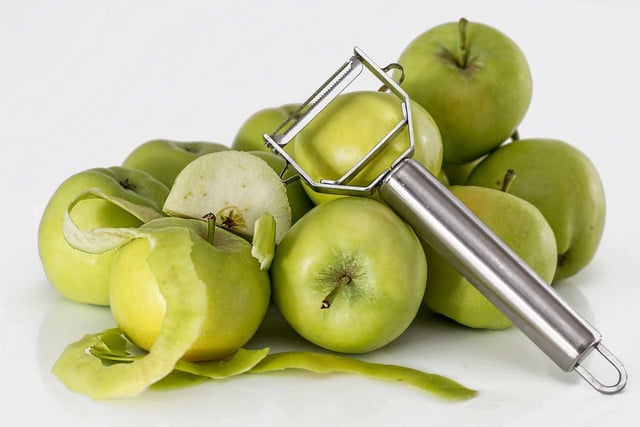


(Foto: CC0 / Pixabay / stevepb)
Many commercial jams as well as homemade recipes call for an enormous amount of sugar to help with preservation and setting texture. This results in a cloyingly sweet spread that often contains more sugar than it does fruit. Adding pectin can help replace some of this sugar for a healthier and fruitier jam. Fortunately pectin can be easily made at home with some leftover apple scraps and a bit of planning.
One of the best sources of pectin are under-ripe or green apples, particularly the cores and peels. Instead of tossing these in the compost, you can stockpile them in the freezer until you have enough to extract the pectin. Just like reusing vegetable scraps to make homemade vegetable broth or stock, this is an excellent way of reducing food waste. Alternately, you can also use whole apples or even crabapples, though this will result in a less concentrated and more “appley” fruit pectin. Just remember to toss the toxic seeds.
Instructions:
- Combine 4 cups apple scraps or cubed apples with 8 cups water (or enough to cover) in a pot.
- Bring the mixture to a boil and then reduce down to a gentle simmer uncovered. Simmer for 1-2 hours or until your apple scraps become mushy. Stir periodically and add a splash of water when needed to prevent the mixture from burning.
- Allow the mixture to cool and then strain it. This can be done by pouring your apple mixture into a colander or sieve lined with cheesecloth or a cheesecloth alternative. Allow the mixture to strain for a few hours or overnight. The gooey liquid that strains out is your fruit pectin!
- Test your pectin when it is cooled; a syrupy gel consistency is ideal. If your pectin is still too runny, you can heat it on low until some of the water evaporates.
- Ladle your liquid pectin into jars. Sterilizing jars for canning beforehand is recommended to prevent mold in extended storage. Refrigerate unsealed pectin for up to three weeks, freeze it in ice cube trays for six months, or process the jars in hot water for one year storage.
- Use around ¼ cup of liquid pectin for each cup of fruit. Remember: fruit pectin needs sugar or acid in order to activate and gel. Since the sugar and acid content varies in different fruits, you may need different amounts of added pectin, sugar, or acid (lemon juice) for a jam to set properly. For best results, refer to a recipe with the specific fruit you want to use.
Need quick pectin? Consider blending an entire apple or two (minus the seeds) and adding it to your jam. Simmer on low to evaporate water and further thicken your jam if necessary.
Note: The white part of citrus peels (the pith) contains even more pectin than apples, which is why orange marmalades gel so well. Citrus pectin can be extracted the same way as apple, but has a somewhat bitter taste best reserved for strong or spicy jams. If using citrus peels, remember to remove the outer zest, since it contains no pectin and will cause the pectin to become overtly citrusy.
Read more:
- Preserving Plums: How to Enjoy Them All Year Round
- What is Agar Agar and How Do You Use It?
- Juneberry: The Tasty Native Berry to Try This Year
Do you like this post?






